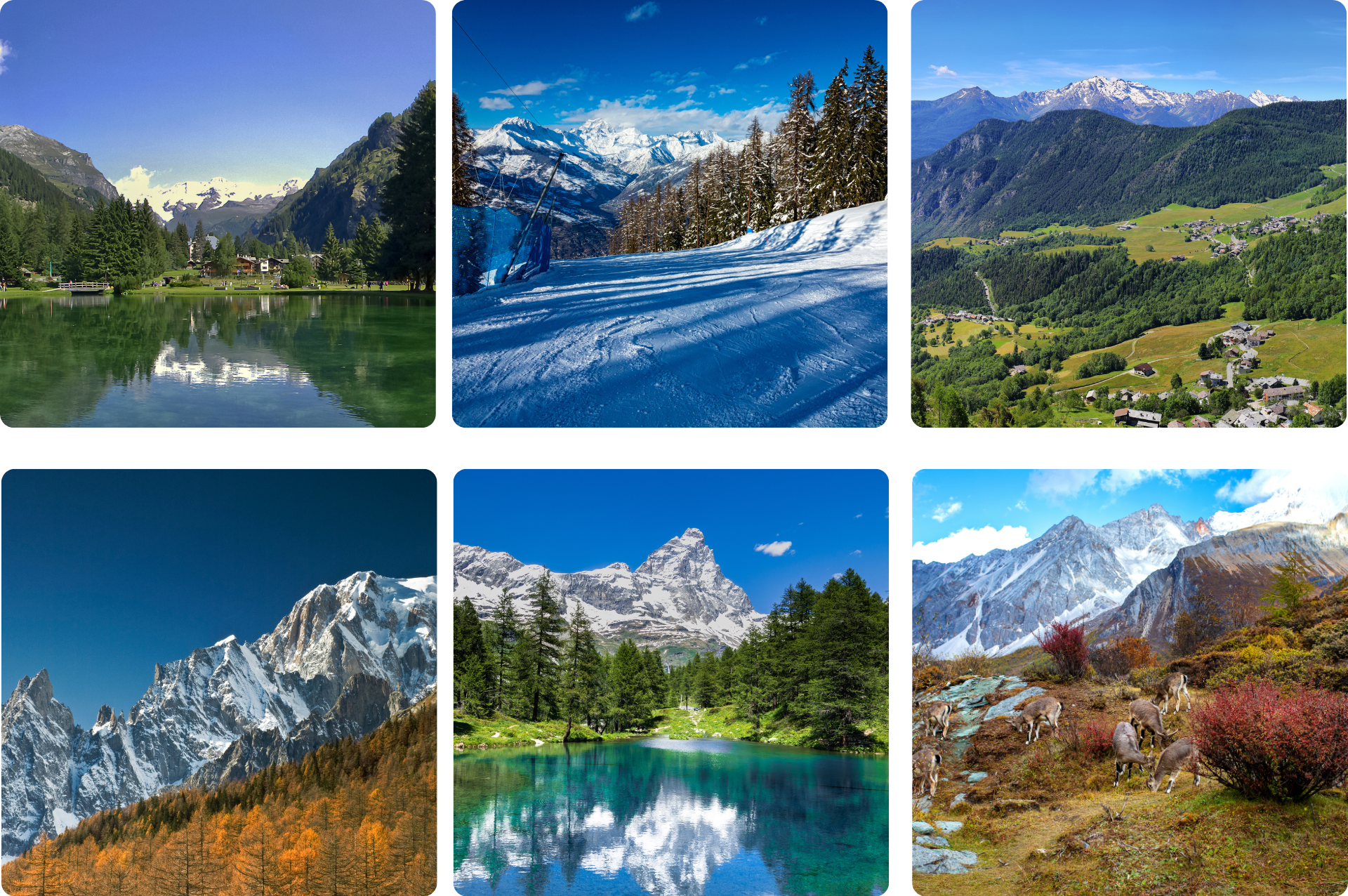Valle d'Aosta

History of the Aosta Valley
The Aosta Valley, with its roots in antiquity inhabited by the Salassi, has seen Roman influence, evidenced by monuments such as the Ponte d'Aël and the Arch of Augustus. The Middle Ages were characterized by clashes between powers such as the Holy Roman Empire and the Duchy of Savoy, while the Renaissance marked the region as a cultural and commercial crossroads. In 1860, it became part of the Kingdom of Italy. 
Main monuments and museums
Among the monuments, the Arch of Augustus, the Roman Theater of Aosta, the Bard Fort, the Cathedral of Santa Maria Assunta and numerous medieval castles such as Fénis Castle stand out. These historic sites bear witness to the region's rich cultural heritage.
The Aosta Valley is home to important museums such as the Bard Fort, the Alpine Museum and the Museum of Traditional Aosta Valley Crafts, which offer insights into the history, culture and nature of the region. 
Aosta Valley cuisine
Aosta Valley cuisine reflects its unique history and geography, with Celtic, Roman and medieval influences. Key elements include Fontina DOP cheese, mountain meats such as mocetta, polenta, mushrooms, and rye bread. Typical dishes such as fondue, Valpellinentze soup and Carbonade highlight the mastery in the processing of mountain cheeses and meats.
Typical products and craftsmanship
Products such as Fontina DOP, Arnad lard and Vallée d'Aoste Jambon de Bosses DOP ham represent Aosta Valley food and wine excellence. Local handicrafts, including wooden objects such as grolla and traditional textiles, reflect the skill and tradition of the region's artisans. 

Popular celebrations and festivals
Events such as the Batailles de Reines, culinary festivals, the historic Carnival and the Sant'Orso Fair celebrate the culture and traditions of the Aosta Valley, while events such as Celtica and the Valentine's Day hot air balloon festival add color and liveliness to regional life.
Demographic and geographic data
With a population of approximately 123,000 inhabitants, Valle d'Aosta is a region with a special statute without subdivisions into provinces. Known for its imposing mountains such as Mont Blanc and the Matterhorn, it has no access to the sea but is rich in rivers and alpine lakes. 
